Page 1 Daily News
by Gail Helmer
Friday, March 30, 2001
PC News
TalonSoft Announces Arab-Israeli Wars.
TalonSoft announced today it will develop "Arab-Israeli Wars". Arab-Israeli Wars is a turn based strategy game that allows players to relive the historical battles of The Six Day War, The Independence War, The War of the Waters and The Yom Kippur War. Dominate the Middle East during a new age of warfare with the emergence of anti tank guided missiles and supersonic Jets. Crush your enemy with the sophisticated weaponry of the M48A2 Patton's, T-62's and the F-4 Phantom II's in 22 exciting stand alone scenarios covering the 1948, 1956,1967, and 1973 Arab-Israeli Wars. Conduct four intense linked Campaign games, taking place on the fierce battlefields of The Six Day War and Yom Kippur War. Arab-Israeli Wars will feature multiplayer options for up to 16 players via LAN or over the Internet, including Play-by-Email. The advanced overhead mapping systems also allows players to view detailed 2D or 3D maps to coordinate maneuvers. This title is expected to be released in Summer 2001. Click Here for more information.
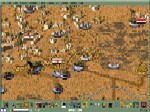
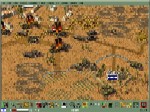
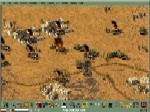
Aces High 1.06 Patch 2 Released.
HiTech Creations has announced that the new patch is out. Click Here for more information, or to download the update.
Aces High 1.06 Patch 2 Features:
Military News
Boeing JSF X-32B Completes Successful First Flight.
The Boeing Joint Strike Fighter X-32B demonstrator today successfully completed its first flight, entering a four-month test program to validate the Boeing direct-lift approach to short-takeoff-and-vertical-landing (STOVL) flight. During the 50-minute conventional flight to Edwards Air Force Base, Calif., from Palmdale, Boeing JSF lead STOVL test pilot Dennis O'Donoghue put the X-32B through a series of initial airworthiness tests, including flying qualities and subsystems checkout.
"I felt right at home in the X-32B," O'Donoghue said. "It flew exactly like the X-32A, which is a real tribute to the commonality of the Boeing design. Today's flight means we'll be as successful in demonstrating STOVL flying qualities and performance with the X-32B as we were with the X-32A in demonstrating conventional-takeoff-and landing and carrier-approach performance."

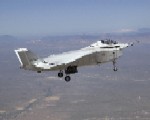
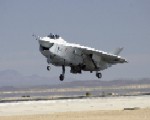
The X-32A completed flight testing Feb. 3 after 66 flights and 50.4 flight hours with six different Boeing and government pilots. The X-32A demonstrated conventional takeoff and landing for the U.S. Air Force and carrier-approach flying qualities for the U.S. Navy. The X-32B will complete a number of flights at Edwards before moving to Naval Air Station Patuxent River, Md., for the majority of STOVL testing. The overall flight-test program will include approximately 55 flights totaling about 40 hours.
The X-32B will demonstrate the company's direct-lift approach to the STOVL requirements for the U.S. Marine Corps and the United Kingdom's Royal Navy and Royal Air Force. Boeing has 30 years experience with direct lift - the only combat-proven approach to STOVL flight. "Our STOVL design uses matured technology to improve an operational design rather than invent a new system and wait to mature it in the future," Statkus said. To perform STOVL flight, the Boeing system closes the rear exhaust nozzle and redirects engine thrust downward through two lift nozzles. For conventional flight, the lift nozzles are closed and thrust flows rearward through the two-dimensional thrust-vectoring cruise nozzle - the same as in the X-32A - to propel the aircraft forward and to supersonic speeds. In addition to their flying performance, both aircraft have provided valuable data about the essential issue of program cost.
"Our team used the same advanced tools and processes to design, build and test the X-32 concept demonstrators that we will use in the next phase of the program," Statkus said. "Because we used these tools and processes now, we generated verifiable cost data to support our affordability projections. And ultimately, affordability is the bottom line for JSF." (Boeing Photos)
Boeing Unveils Faster, Longer-Range Commercial Airplane.
Boeing Commercial Airplanes is focusing new product development efforts on a faster, longer-range airplane, President and Chief Executive Officer Alan Mulally announced today. "This is the airplane our customers have asked us to concentrate on," Mulally said. "They share our view that this new airplane could change the way the world flies as dramatically as did the introduction of the jet age."
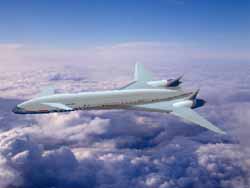
The ability to fly at speeds of Mach .95 or faster over extended ranges will allow passengers to fly where they want to go, when they want to go - directly to their destinations, avoiding congested hubs and without the hassle and delay of intermediate stops.
"When we combine higher speed, longer range, the comfort of flight at higher altitudes, and the environmental benefits of quieter landings and takeoffs, we have an airplane that will open a new chapter in commercial aviation," Mulally said. "We are changing our new product development efforts to focus more strongly on this airplane that has caused such excitement among our customers. It will be an ideal complement to our current family."
Added Mulally: "I am excited that our Boeing team is at the point where our airplane design and manufacturing technology have come together to enable the next major step in the industry's future. This new faster airplane is one of the most tremendous opportunities we have seen to bring even more value to the world's travelers."
Greece Postpones Purchase Of Eurofighter Jets.
Greece has said it is postponing the purchase of 60 Eurofighter Typhoon fighter aircraft until after 2004 in order to save money for social enhancement programmes and the Olympic Games. After a marathon cabinet meeting Greek Prime Minister Costas Simitis emerged to tell reporters that "More efficient control over expenditure will be implemented ensuring a higher degree of transparency and more rigorous drive against tax evasion."
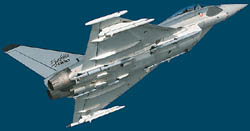
Greece had signed a 5 billion euros ($4.43 billion) contract for 60 aircraft with an option for a further 30. This order had been the only one outside the original four (UK, Germany, Italy and Spain) that had launched the Eurofighter and the company, jointly owned by EADS (46%) BAE SYSTEMS (33%) and Alenia Aerospazio (21%), was using that as a major sales tool in discussions with other interested parties.
Worryingly for Eurofighter the Prime Minister used the words 'fourth generation fighter jet' rather than 'Eurofighter' when talking about future procurement decisions. Delaying the decision until after 2004 brings a number of aircraft into the frame, not least the Joint Strike Fighter, assuming it survives the Bush administration's review of major procurement programmes. However, a government spokesman emphasised that the decision to buy jets was not being scrapped but merely pushed back.
Thursday, March 29, 2001
PC News
New Lock On: Modern Air Combat Screenshots
SSI has posted 14 new screenshots for Lock On: Modern Air Combat. These screen shots illustrate a preliminary version of Lock On's new terrain system. Because of the early nature of this terrain, it will be subject to change. Click here to check them out.
Targetware Releases Public Open Architecture FM.
Today, Targetware released the first public version of its open architecture FM (Flight model) and weapons specifications. It provides the basic flight modeling and weapons design structures, as well as the individual field and data file specifications that are required in order for the player community to create their own aircraft flight models and weapons types for the Targetware flight simulation engine.
The ACM (aircraft model) type of files, weapons files, standard 3d plane model graphics files, standard skin formats, the terrain and its objects, the sounds, plus even individual ammo types are ALL digitally signed resource files. They incorporate "banking caliber" Public Key Encryption standards, plus ALL communications between hosts, clients and meta servers are fully encrypted. Any of the resource files can be opened and read with a standard notepad text editor and the skins can be modified with any standard paint program. Players can modify and create, then digitally sign their own unique resource files, controlling on which servers they may be used, or submit them to Targetware for us on corporate servers. Click here to view or download the documentaion.
Operation Flashpoint Reaches 1 Millions Downloads.
Codemasters confirmed that the Operation Flashpoint Demo has had over 1 million downloads. Click here to read our preview.
Military News
BAE SYSTEMS Completes Initial 155mm Howitzer US Tests.
The first BAE SYSTEMS XM777 Engineering Manufacturing Development (EMD) prototype howitzer has completed two series of evaluations at the US Army's Yuma Proving Ground. The tests, which started in November last year, were the Human Factors Engineering (HFE), Task Model Validation (TMV) and the Firing Table Tests. BAE SYSTEMS RO Defence, United Kingdom, is the prime contractor for the production of this new 155mm howitzer, for the US Marine Corps and US Army. Production is scheduled to begin in the autumn of 2002.Some 80% of the howitzer, by dollar value, will be produced or integrated in the United States.
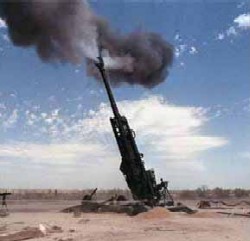
TMV is conducted to validate the crew task models and to determine if the current howitzer configuration can meet the emplacement and displacement time requirements. Two active duty howitzer crews were used, one from C Battery 1st Battalion 321st Field Artillery (Airborne), from Fort Bragg in North Carolina, and the second from the 10th Marine Regiment, at Camp Lejeune, also in North Carolina.
The crews were able to meet the required emplacement and shift of direction time requirements with the XM777. Emplacement times of two minutes were achieved against a three-minute requirement. The gun crews rated the XM777 much superior to the M198 in ease of emplacement and displacement. Rapid emplacement/displacement are key features in the increased survivability of the new XM777 howitzer over the existing system.
The Firing Tables Tests were also successfully completed by the XM777. Numerous charge and projectile combinations were fired in a side-by-side comparison with the current M198 howitzer with which the XM777 is ballistically matched. The first EMD howitzer fired several hundred rounds during these tests and since the beginning of the EMD contract with BAE SYSTEMS, XM777 prototypes have fired thousands of test rounds.
US Completes Harrier, Litening II Pod Testing.
The US Navy has completed integration testing of the Litening II Targeting Pod into the AV-8B Harrier aircraft systems. The Litening II Pod will give the Harrier, for the first time, the capability to autonomously deliver precision guided munitions, such as laser guided bombs and missiles, as well as enhanced day and night target acquisition and improved low-level night flight capabilities. As long time international partners in the AV-8B Joint Programme Office, both the Italian and Spanish Navies have joined this development effort.

"Our job is to keep the Harrier's warfighting capabilities relevant for any current or future combat operations for the next 20 years. I believe that adding the Litening II Pod to the Harrier's arsenal of weapons takes a huge step towards accomplishing those goals," said Col. Tom White III, PMA-257's programme manager. "At the same time we are making sure that the engine and airframe are sustained and maintained to be as safe as possible to operate and employ."
Funded by a Congressional plus-up in fiscal year 2000 and fiscal year 2001, PMA-257 set to work to buy, integrate, engineer, test, and establish initial support for a targeting pod for the Harrier. The plan is to buy 47 Litening II Pods through an existing US Air Force contract. The Litening II Pod completed electromagnetic compatibility testing here in preparation for its shipboard deployment in late January 2001. Testing is on schedule and the goal is to have targeting pods and full support in place and delivered to the Fleet this fiscal year.
The Litening II Pod is currently in operational use by US Air National Guard and Air Force Reserve F-16 aircraft. The pod has been flown in Operation Northern Watch, and has accumulated more than 9,000 operational flight hours.
DERA's VAAC Harrier Completes HMS Invincible Trials.
DERA's VAAC (Vectored thrust Aircraft Advanced flight Control) Harrier has completed the second phase in the Follow-on Research Programme (FRP) sponsored by the American/UK Joint Strike Fighter (JSF) programme. This saw ship-based work with HMS INVINCIBLE offering a realistic environment at sea to test aircraft control concepts applicable to the STOVL (Short Take Off Vertical Landing) variant of JSF.
The first, land-based, evaluation phase last year built on the results of previous trials and familiarised new pilots with the advanced control concepts of the VAAC Harrier and resolved known deficiencies. The key objective of the second phase was to assess the compatibility of advanced recovery modes, including novel techniques such as Translational Rate Command, in the demanding and realistic operational environment encountered on the moving deck of a ship. Two main control modes were tested with two variants of the hover positioning sub-mode.
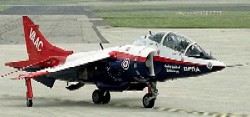
This was the first full evaluation of the control laws at sea and saw a 7-day trial period on HMS INVINCIBLE where four pilots from the UK, US and Italy completed a total of 85 deck landings in various winds and sea states. Significantly, one of these pilots had neither previous experience of a STOVL aircraft nor shipboard operations, indicating the impressive capabilities of the VAAC Harrier and advanced control such was his ease in completing the tasks successfully.
The shipboard operations were used to confirm the few concerns with some of the control modes that had already been raised and also allowed comparisons to be made to identify potential preferences.
"The results from HMS INVINCIBLE are significant in a number of ways," says Lieutenant Commander Phil Hayde RN, DERA's VAAC Harrier Test Pilot. "It has proven the VAAC's capability for a low workload solution which provides carefree handling and a low risk of cognitive failure. Practically this would help to ease the training burden by reducing the criteria for STOVL pilot selection and cutting the time taken to convert to type. Additionally advanced control provides optimal performance to the pilot allowing increased operational capability whilst the aircraft would cost considerably less to operate over its life cycle" he continues.
The VAAC Harrier is currently at DERA's Boscombe Down site evaluating a system which will allow the automatic recovery of a STOVL aircraft to a pre-defined point in space. A further phase of the FRP will investigate advanced control of Short Take-Offs and an enhancement of one of the control concepts that was investigated at sea.
DERA's VAAC Harrier boasts the most capable and unique system in the world for studying control concepts for powered lift aircraft. Detailed modifications to its two-seater format have introduced a digital flight control system that offers advanced, programmable fly-by-wire capabilities from the rear seat. The result gives the rear pilot full-authority, digital control of the aircraft via a computer interface allowing different flying modes to be developed and installed.
The JSF trials with the VAAC Harrier builds on prior DERA/NASA research into advanced control laws but represents the first comprehensive shipboard evaluation. This research will help reduce the risk of the JSF STOVL flight control system development efforts as the programme enters the EMD (Engineering & Manufacturing Design) phase. The VAAC Harrier is well known to the JSF programme and has been used for both government and contractural evaluations in the past.
The VAAC Harrier's digital flight control system has three key implications. Firstly it allows the testing of different flying modes in real-flight environments. Secondly, modifications to the software and the flying experience can be swiftly and easily accommodated between flights with significant benefit of incorporating pilot feedback practically instantaneously. Thirdly, it offers STOVL capability without the need for the tricky third nozzle control lever, thus significantly improving reducing pilot workload.
Wednesday, March 28, 2001
PC News
Everything You Wanted To Know About Flanker, Ubi Soft and SSI.
SSI is the most active studio with five combat simulation titles in development for 2001. Yet, amidst the turmoil of two buyouts in less then six months, it is, frankly, amazing that any work is getting completed. With the pressures from new bosses and the sim community, SSI continues to out-do themselves. As we announced yesterday, the long awaited Flanker 2.5 upgrade has finally been released ahead of schedule. Always the busy man, Carl C. Norman, Director of Product Development, took time out on the Flanker2.com forum to discuss the recent changes at SSI. (Reprinted with permission).
Flanker Comrades,
Janes' Combat.Net Shutting Down.
Hopefully you are all enjoying the Version 2.5 Upgrade for Flanker. I'd like to take the opportunity give you some further information.
First, I want to thank a few people in particular. My appreciation to the Eagle Dynamics Team in Moscow. They have really done a great job on this upgrade and continue to do their magic with our next air combat product, Lock On. If you like V2.5, you will love Lock On.
Thanks to Andrew Pavacic, Rich Sorochak, and Mark Shepheard for their help with the upgrade as well as their work on the new scenarios and training missions. Great work Gentlemen. My personal appreciation to Matt Wagner for his outstanding efforts. Matt is exactly what we needed and he continues to be an invaluable member of our team.
Now that V2.5 is available for downloading I'd like to discuss some recent events. First, the acquisition of the Entertainment Division of The Learning Company by Ubi Soft.
Ubi Soft purchased the assets of the Entertainment Division which was called GAME Studios and included the SSI brand of products. This includes the simulation products such as Flanker, Lock On, Silent Hunter II, Destroyer Command, and Harpoon 4.
This acquisition was very fast and much has happened in the past two weeks. We are in the process of reorganizing our group and there is still much that needs to be worked out and decided. As with any transition to a new organization, there has been some sad news. We've lost some great people recently, to include Tim Goodlett and Kevin Hicks. We wish them well and will miss their contributions. As many of you have heard, Harpoon 4 was cancelled. While there are discussions to reconsider this decision, there is no additional news regarding this product at this time. But, stay tuned. (No promises)
As a result of the transfer to Ubi Soft, the Electronic Boutique deal that would put Flanker 2.5 in their stores has been delayed.
The transition to the Ubi Soft accounts and sales staff makes it impossible to get this product distributed by the March 30th date we had originally planned. The reason Matt and I have not mentioned anything about the EB deal these past few weeks is because we just did not have the word on the state of the deal as the acquistion was taking place.
With all the coordination and transition going on it is obvious that this situation is a lower priority than the hundreds of other factors that have to be worked out as part of this type of business transition.
Matt and I were very stressed and concerned that this situation was going to result in a further delay in the release of V2.5 and we have been lobbying hard to get permission to release the upgrade to the website for download as soon as possible. Our persistence paid off and this week we were given permission.
It is important to realize that EB may still put Flanker back on the shelves with V2.5 included. I urge all of you to support EB in this effort. I wish I could tell you when the product will be on the shelves, but there is still much coordination left to do before a date is final. We'll keep you posted.
In the meantime, we have tried to make the download as painless as possible by providing a segmented version that can be downloaded in smaller portions for those of you with slower connections.
We are trying to get the upgrade versions on mirrored sites and encourage any of you with sites to go ahead and put the files on your sites. Spread the wealth! Our PR Department is trying to get the upgrade files on several of the gaming magazine CDs in the next month or two.
Several of you have requested the ability to just buy a CD with the upgrade on it. We don't have that in place at this time, but it is something we are looking into. In the meantime, we encourage those of you in various locations around the world to share the upgrade with one another. It doesn't hurt to meet and work with your fellow Flanker player. Support the community.
The exact future of our simulation product line is still undecided. I can tell you that my contacts with Ubi Soft have indicated firm desire to continue our simulation product line. I am optimistic and will do everything I can to promote the continuation of our combat simulation products. My Producers Matt Wagner & Shawn Storc, and myself are the guys that will be working these products. We are all committed to continuing the work we've started on these products and have great plans that we will be presenting for approval. We encourage you to be positive and supportive to this end.
I'm not sure how all of you can contribute to the future of our simulation product line other than to be positive, continue to participate online here on the Flanker Forum and the Lock On site (when it is active in the next few months). Of course your continued patronage by purchasing our products is also very helpful. (Silent Hunter II & Destroyer Command are our next sim products to be released, hint, hint.) Let's show Ubi Soft that there is a market for these products and that there is a robust and enthusiastic community that supports the development of combat simulations.
The V2.5 Upgrade is free to the community. We only ask that you pay for it by showing your support and continued interest in our products. Spread the word online. Get more people to participate in the Forum. Share your experiences playing Flanker on other sites and the Usenet. Let's get the other communities of modern air combat sims to get involved with Flanker. Demand for the product is one of the best ways to get Ubi Soft's attention. They are very interested in simulations, but I really feel that a very enthusiastic response from the community will make our jobs easier in getting the support and funding we need to do the products all of you really want to see developed. Buying the products is a great way to help, but even more important is helping us build our user base by encouraging your friends and fellow virtual pilots to give Flanker and Lock On a chance.
Matt and I want to personally thank all of you for your continued support. We were almost giddy with anticipation today as we worked with our Web Programmer, Kerry Brantner (who deserves much thanks), to get the upgrade files up on the site by the close of business today.
We sincerely hope that all of you enjoy our efforts as well as the hard work by the fine folks in Moscow that made this upgrade possible.
Warm Regards.
Carl C. Norman
Director of Product Development
EA has officially announced the closing of Jane's Combat.Net.
It is with a bit of sadness and an eye towards the future that we announce today the closing of Jane's Combat.Net on April 30th. We have enjoyed bringing you the opportunity to fly the Jane's Combat Simulations series online, but are now turning our focus on bringing you a far more compelling online entertainment experience through EA.com. EA.com features a growing list of many different types of online games, including Air Warrior 3 Millenium Version, a WWII online flight simulation. We would like to thank you for playing on Jane's Combat.Net and encourage you to check out EA.com and Air Warrior 3 Millenium Version to satisfy your online flying needs.
Flanker 2.5 Compatible Mission Pack Released.
The Flanker 2.5 upgrade was just released yesterdy and mission builder "BrzI" has already released a mission pack. Called "Grand Opening", this mission pack is ideal for multi-player, and includes ten (10) missions. Click here to download.
Military News
Body, F-15C Wreckage Found.
Search and rescue teams looking for two U.S. Air Force F-15C Eagle aircraft, missing since March 26, have located the body of one pilot and the wreckage of one aircraft near Ben Macdui in the Cairngorm Mountains, Scotland. The identity of the pilot has not been determined. Lt. Col. Kenneth Hyvonen, from the 48th Operations Support Squadron, and Capt. Kirk Jones, from the 493rd Fighter Squadron here were each piloting an F-15C, when both disappeared off radar March 26 over Northern Scotland. The search continues for the second pilot and aircraft. Officials at RAF Kinloss said that poor weather in the area is restricting the search. The F-15C aircraft is a single-seat, all-weather, tactical fighter designed to gain and maintain air superiority in aerial combat. A board of U.S. Air Force officers will investigate the cause of the accident.
Australian Army Gets Two New Boeing CH-47D's.
C Squadron of the Australian Army's 5th Aviation Regiment, based at Townsville, took delivery of two new Boeing CH-47D Chinook helicopters in an acceptance and transition ceremony here today. Maj. Gen. Peter Abigail, AO, Land Commander Australia, presided over the ceremony. The Chinooks, officially delivered to the Defense Materiel Organisation in February after final modification in Australia, join four other CH-47Ds in service since 1995 with the 5th Aviation Regiment. The Regiment transports troops, fuel and heavy equipment in support of ground force operations and has handled a variety of humanitarian and civil relief missions for the Australian Defence Forces and the United Nations in the Southwest Pacific region.
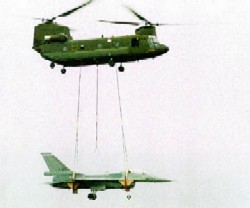
The Boeing Chinook is the world's most reliable and effective heavy-lift helicopter. Tandem rotor configuration provides exceptional lift in hot and high conditions, with useful loads up to 11,350kg (25,000 lb), and excellent controllability in conditions that curtail conventional helicopter flight. The Australian CH-47Ds are equipped with triple cargo hooks, modular hydraulics and an improved electrical system. Large external and internal load capabilities and high airspeeds allow the Chinook to do the work of three utility helicopters and give it among the lowest cost-per-ton-nautical-mile profiles available. (RAAF Photo)
Tuesday, March 27, 2001
PC News
Flanker Version 2.5 Released.
SSI has released the long awaited upgrade to Flanker 2.0. The free Flanker 2.5 upgrade is now availabe for download in three versions, Non-Voodoo Version, Voodoo 1/2/3 Version, Voodoo 4/5 Version. Click Here to go to the installation instructions and download page.
Features added in the Flanker 2.5 upgrade include:
In addition to the features listed above, a large assortment of minor enhancements and fixes have been included.
Fly! II Update And Screenshots.
GodGames sent us these screenshots and an update on the instrumentation in the soon to be released Fly! II. Release Date: April 27th. Click here to visit the Fly! website.
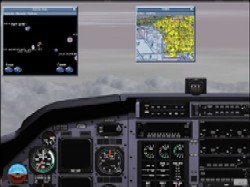
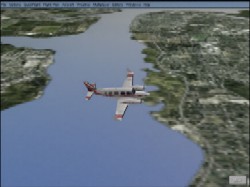
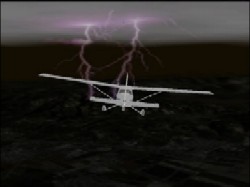
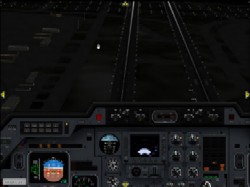
Virtual novices will be assisted by VFR/IFR and sectional charts through built-in aids, while experienced pilots will realize the fidelity and accuracy of the navigation systems. Fly! II offers expansive visual and technical navigational tools for the most realistic flight simulation experience ever, including:
Electronics Boutique Signs Exclusive Retail for 'Battlecruiser Millennium'.
Electronics Boutique Holdings Corp.today announced a three month contract with Derek Smart, president of 3000AD, Inc, and lead developer of Battlecruiser Millennium (BCM), to be the exclusive retailer for distribution of the space combat simulation game for the first three months of its retail availability.
"We're thrilled to be the exclusive retailer for the eagerly anticipated release of Battlecruiser Millennium, which promises to build upon Derek's successful franchise that has captivated and immersed gamers for years," says Jerry Madaio, Vice President of Merchandise, PC Division for Electronics Boutique. "As the leading global interactive entertainment retailer for consumers, Electronics Boutique is committed to finding new and innovative ways to work closely with the gaming industry to create mutually-beneficial partnerships that add value for our loyal customers."
Battlecruiser Millennium (BCM) is the sequel to the critically acclaimed and industry-recognized Battlecruiser series. Complete with over nine new or enhanced engines, including AI, graphics and sound effects, BCM steps into the new millennium offering the most advanced and visually compelling title ever seen in the series. BCM is scheduled to launch on May 17, 2001 at a suggested retail price of $49.99. Click here for more information about BCM.
Waterloo: Napoleon’s Last Battle Ships.
Strategy First and BreakAway Games announced today that Waterloo: Napoleon's Last Battle has shipped. Based on the Sid Meier's Gettysburg engine, Waterloo brings back to life Napoleon's most memorable battle. With over 25 historical scenarios, the game features unique Orders of Battle, famous troop types, including dragoons, hussars, cuirassiers, as well as the Old and Young guard, and famous landmarks like the Hougoumont complex, La Haye Sainte and Plancenoit Church. The game also features over 60 historically accurate and hand painted uniforms that reflect the grandeur of the period. The game will be hitting store shelves nationwide in the next few days.
Commandos 2 Website Launched.
Edios has launched a new Commandos 2 website. Commandos 2 is a tactical action/strategy game set in World War II. Go covert into new environments based on actual WWII locations: the heart of the Third Reich, a Northern European submarine installation, a sea-based aircraft carrier, and the headquarters of the Japanese army. Click here to check out the Commandos 2 website.
War Games Premieres on TBS.
On Wednesday, March 28, the original television special War Games will premiere on TBS Superstation. This television event will challenge each branch of the U.S. Armed Forces with realistic combat scenarios. The "games" that these soldiers will be playing are the same training exercises they use to prepare themselves for war. Click here for details on the participating military troops and the four different combat scenarios.
Military News
Army Plane Crashes in Germany, Killing 2.
An Army reconnaissance plane crashed in Germany on Monday afternoon U.S. military authorities said. An Army pilot and a crew mate were killed as their RC-12 aircraft, on a training mission from Wiesbaden, tumbled into a Bavarian forest about eight miles from Nuremberg. The Army plane, which crashed about 4 p.m. local time, was a twin-engine propeller aircraft assigned to the 205th Military Intelligence Brigade. The aircraft was not carrying explosives, officials said. The cause of the crash is under investigation by experts from the U.S. Army Safety Center at Ft. Rucker, Alabama.
This latest crash occurred only hours after two Air Force fighters disappeared and were feared lost over the Scottish Highlands, U.S. military authorities said. . The coincidence of the two accidents in one day was not an immediate cause for concern, officials said.
Not counting Monday's mishaps, the U.S. military has had 25 major, or Class A, accidents and 20 fatalities so far in 2001. Last year at this time, the military had had 25 accidents and 18 fatalities. A Class A mishap is defined as an accident involving $1 million in damage or a fatality. The accident rates--a calculation of mishaps per 100,000 hours of flight time--are identical for the two years to date, said Navy Lt. David Guy, a spokesman. The accident rate for 2000 as a whole was down 20% from the 1999 rate, according to the statistics.
Search Resumes For Missing F-15 Pilots.
ROYAL AIR FORCE LAKENHEATH, England -- Search and rescue efforts resumed March 27 by United Kingdom's Ministry of Defence at Royal Air Force Kinloss to locate U.S. Air Force pilots Lt. Col. Kenneth Hyvonen, 48th Operations Support Squadron, and Capt. Kirk Jones, 493rd Fighter Squadron here. Hyvonen and Jones were each piloting an F-15C Eagle, when both disappeared off radar March 26 over Northern Scotland.
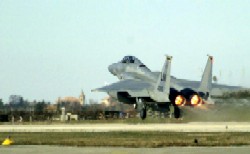
A U.S. Air Force disaster control group was sent to RAF Kinloss to join the ongoing search effort. The team joins two U.S. Air Force MH-53 helicopters stationed at RAF Mildenhall, already involved with the search. The disaster control group is a team of specialists trained to deal with a variety of contingencies. The team will augment ongoing efforts as needed. The F-15C aircraft is a single-seat fighter and is an all-weather, extremely maneuverable, tactical fighter designed to gain and maintain air superiority in aerial combat. The aircraft are assigned to the 493rd Fighter Squadron here.
Predator Unit To Deploy To Balkans.
Secretary of Defense Donald Rumsfeld has approved a deployment order to send RQ-1 Predator unmanned aerial vehicles to the Balkans. Based at Indian Springs, Nev., the Predators and about 80 support personnel are being sent to the Balkans at the request of the Supreme Allied Commander-Europe. The date for deployment has yet to be announced. The Predator is a medium-altitude, long-endurance unmanned aerial vehicle system. Its primary mission is airborne reconnaissance, surveillance and target acquisition in support of the Joint Forces Commander.
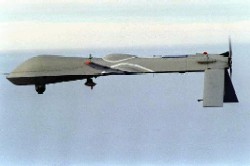
Two Dead In German Air Force Crash.
Two aircrew members of a German air force Tornado fighter-bomber aircraft crashed March 23 in a restricted area on the Nevada Test and Training Range, 100 miles northwest of Las Vegas and 40 miles southeast of Tonopah, Nev. The German Air Force is here participating in a Red Flag Exercise 01-3, which began March 3. A team from the German Air Force is the primary investigators of the accident. The U.S. Air Force will assist as requested.
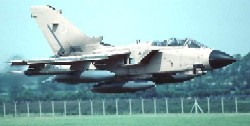
Lockheed Martin Awarded MLRS Contract For The Republic Of Korea.
Lockheed Martin Missiles and Fire Control- Dallas has received two contracts totaling $84 million for Multiple Launch Rocket System (MLRS) launchers for the Republic of Korea. The U.S. Army Aviation & Missile Command, Huntsville, Ala., is the contracting agency. Launcher production will take place at the company's Camden, Ark., facility. Initial delivery of MLRS M270 launchers is scheduled to begin in September 2002, with consecutive monthly deliveries to follow through to completion in June 2003.
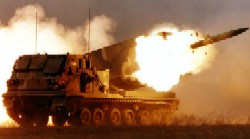
MLRS is the world's most formidable rocket and missile artillery system. Its surface-to-surface ballistic rockets have a range of 28 miles (45 kilometers). A single MLRS launcher can put more than two tons of destructive firepower on a target in one minute and its full load of 12 rockets can cover 30 to 60 acres with thousands of grenade-like submunitions. Each of the submunitions in an MLRS rocket has about the same destructive power as a hand grenade and contains a shaped charge that allows it to penetrate light armor.
MLRS launchers and rockets are now in the inventories of the U.S. Army, Army National Guard, France, Germany, the United Kingdom, Italy, the Netherlands, Bahrain, Japan, Norway, Denmark, the Republic of Korea, Israel, Turkey and Greece.
Monday, March 26, 2001
PC News
Air Warrior Screenshots.
Kesmai has sent us these Air Warrior flight modeling screenshots and a description of the process used to calculate flight modeling. Kesmai is currently working on the update to Air Warrior 3.
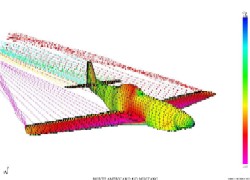
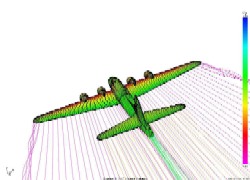
These are output from the finite element analysis program we now use to calculate the flight models. The art department makes patch models of the aircraft. These models are to scale and have accurate airfoil sections for the wings. When we are done, Kelton takes the models and runs them through the analysis software. The run moves the plane, and the planes features (elevators, ailerons, rudders, etc...) through various angles of attach (both in pitch and in yaw) and then outputs the final data. The data gives us all sorts of performance numbers, along with other data such as wake sheding, pressures, boundary layers, wingtip vortices, etc...
These images show pressures (the color of a patch indicates its pressure--the key is on the right), wakes, and wingtip vortices. These images do not show propellors or prop-wash. We do calculate that, though. The prop-wash runs take a very long time to calculate. These images are from runs that Kelton did to make sure the data was working, before he attached the props. Click here to visit the Air Warrior website.
Air Warrior - Alive and Well!
As the saying goes, "The report of my death was an exaggeration" (Mark Twain). Last week we reported that Electronic Arts Cancels Air Warrior 4, although it is true that a good number of layoffs have occured at Electronic Arts, the project Air Warrior 4 has not been cancelled.
Sources close to the project have told COMBATSIM.COM, "The project itself AW4 will not be named AW4, it is being used to update AW3, now just called Air Warrior. We are doing some amazing stuff and it will be rolled out earlier as part of massive updates to AW that we are doing."
New GI Combat Screenshots.
TalonSoft sent us new screenshots from its upcoming World War II combat strategy game, GI Combat. The screenshots show off some of the different units and environments that will be featured in the game. GI Combat will include a number of historical missions ranging from D-Day to Patton's breakout from the Normandy beachhead.
The game will also include several hypothetical missions. Players will assume control of either the American or German troops and lead them through a variety of tactical encounters. Click here to download a brief movie clip of a German Halftrack, which details the working suspension and tracks that will be seen in the finished game.
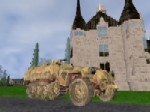
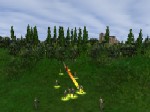
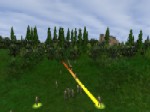
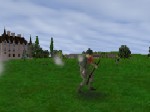
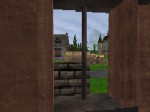
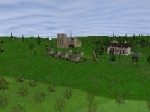
IL-2 Sturmovik Development Update.
Oleg Maddox's development update includes screens of; FPS inside the cockpit, custom skins and a new flyable plane – LaGG-3-IT. Click Here to check it out.
Saitek Introduces New P8000 Command Pad.
Saitek Industries introduces the new Saitek P8000 Command Pad (formerly known as the PCdash2). The Saitek P8000 Command Pad allows instant access to game functions and is great for flight sims, strategy games or even web browsing.
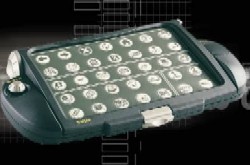
The P8000 is a graphical command pad with 35 programmable positions, two fire/shift buttons and an 8-way hat switch. It is fully programmable with a "Plug-and-Play" USB connection and comes with Saitek Gaming Extensions (SGE) software for easy installation. With SGE PC users can configure the P8000 with an on-screen PC interface, program special moves and use sophisticated timing features. Gamers can also personalize the P8000 for their favorite games and is ideal for creating numerous profiles for multi-player games. Gamers can use the over 200 game and application cards are available for download on the Saitek web site, or simply create their own card to print using the software. The P8000 has a suggested retail price of $49.95 and is available for May 1.
Click Here to read COMBATSIM.COM's exclusive review of the P8000.
Military News
Two US F-15 C's Missing In Scotland.
Two U.S. jets have gone missing during a training exercise over Scotland. The Pentagon confirmed two F-15 C fighter jets on a training flight were about an hour overdue from their scheduled landing at a base in Lakenheath near London. Police in Scotland said the planes had been reported missing during a routine mission at 2.40 p.m (1340 GMT) on Monday. The UK Ministry of Defence confirmed that the two aircraft were missing.
The planes, each carrying one pilot, were from the 493rd Flight Squadron, and had been involved in low level exercises. On board was sophisticated radar equipment. Michael Mulford, a spokesman for the Royal Air Force, told Sky News: "Contact was lost on the radar and radio. "We did have somebody report an explosion in the Cairngorms. We had no reports of distress beacons or flares." He added: "We are concerned of course, for the pilots, but at the moment, we simply have no trace. "Each minute and each hour that goes by, we are profoundly worried about their fate. At this point it is very difficult to be anything other than pessimistic." Mulford said the planes were modern and the pilots would have "almost certainly" been familiar with the area.
Two Nimrods from RAF Kinloss and three Sea King helicopters -- two from RAF Lossiemouth and one from RAF Boulmer -- were involved in the search, said an RAF spokeswoman. They were joined by two RAF mountain rescue teams, from Kinloss and Leuchars, and the Braemar Mountain rescue team. The RAF said the F15s left RAF Lakenheath at around 12.30 p.m. (1130 GMT) for a three-hour sortie in the Scottish Highlands. They last made radio contact at 1.15 p.m. (1215 GMT).
Boeing JSF STOVL Ground Environment Data Beats Predictions
Extensive ground environment tests conducted on the Boeing Joint Strike Fighter X-32B demonstrator last week confirmed the aircraft's short-takeoff-and-vertical-landing (STOVL) system operates at acoustic and temperature levels lower than predicted at full power. Mike Heinz, Boeing vice president and JSF deputy program manager, said the test data prove the Boeing STOVL ground environment is well within operational limits. "The testing verifies we meet all requirements and provide a safe operating environment for the customer," Heinz said. "We confirmed that with the X-32B at 100 percent STOVL thrust, the ground environment is at or below heat- and noise-level requirements."
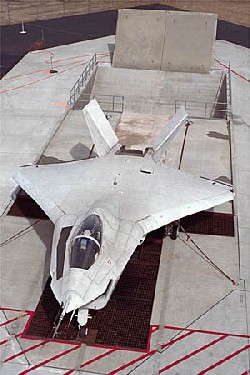
Ground environment tests are essential to ensure the aircraft can maintain continuous operations on takeoff and landing surfaces, and to ensure the safety of maintenance personnel working on and around the aircraft. According to Heinz, lower acoustic and vibration levels inside the aircraft provide reduced development risk for the next phase of the program. "Our X-32B test program is moving along right on schedule, and first flight is imminent," Heinz added.
Boeing lead STOVL test pilot Dennis O'Donoghue, a former Harrier pilot, was in the X-32B cockpit for the engine tests. "I couldn't be more pleased with the outcome of the tests and the aircraft's internal acoustics in general," O'Donoghue said. "Cockpit noise level was about the same as in a Harrier."
On the STOVL engine test stand, transition times between conventional and vertical thrust and back again have been accomplished consistently in one to three seconds. This rapid and direct transition capability is critically important for unrestricted STOVL operations and aircraft safety. The X-32B will demonstrate the company's direct-lift solution to the STOVL requirements for the U.S. Marine Corps and the United Kingdom's Royal Navy and Royal Air Force.
General Dynamics Awarded Contract for Submarine Support Work.
General Dynamics Electric Boat has been awarded a $13.2 million contract modification to provide design, engineering and technical support services for U. S. Navy nuclear submarines. Specifically, Electric Boat will provide planning yard services for Trident submarines and NR-1, the Navy's nuclear-powered research submarine.
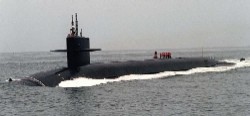
The company will also perform work supporting design and configuration changes for Trident and Seawolf submarines, and facilities at the Navy's Kings Bay, Ga., submarine base. Eighty-nine percent of the work will be performed at Groton; 6 percent at Kings Bay and 5 percent at Quonset Point, RI.
X-35B Completes Hover Pit Testing.
Lockheed Martin’s Joint Strike Fighter (JSF) X-35B demonstrator aircraft has successfully completed hover-pit testing of its short takeoff/vertical landing (STOVL) propulsion system with all major test goals accomplished on schedule.The tests confirmed that the X-35B’s unique shaft-driven lift fan propulsion system produces abundant vertical lift, lower exhaust temperatures and a more acceptable ground environment than traditional direct-lift systems, while eliminating hot-gas reingestion problems typical in conventional STOVL designs.
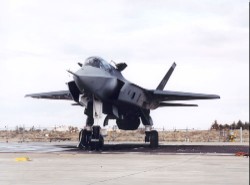
"STOVL temperature and velocity measurements were even better than predicted, and we achieved sustained, full operational thrust," said Harry Blot, deputy program manager for the Lockheed Martin JSF and a former Harrier pilot. "This not only positions the X-35B for STOVL flight this summer, but also means that no further engine development is needed to meet JSF STOVL requirements. The Pratt & Whitney engine and Rolls-Royce fan performed beautifully."
Hover pit tests were conducted with a special landing gear that allowed load cells to measure STOVL lift forces and moments directly, while keeping the airplane from lifting into hover at higher power settings. Over a two-week period, the Lockheed Martin team conducted more than 100 test series with all control functions fully under pilot command.
"Everything worked as advertised. It was totally reliable," Blot said.
X-35B lead STOVL pilot Simon Hargreaves of BAE SYSTEMS performed full rehearsals of vertical-flight missions, including conversions from conventional takeoff and landing (CTOL) mode to STOVL modes. Measurements showed no thermal distress from either hot-gas reingestion or any flow-field effects on the aircraft surfaces. Instrumentation also recorded favorable thermal conditions at ground level near the airplane.
The test series included 26 lift-fan clutch engagements from CTOL to STOVL mode at high engine RPM. The X-35B repeatedly operated at maximum STOVL thrust levels for periods of up to 90 seconds. Individual test series were regularly run with a full aircraft fuel load for as much as an hour.
"All 26 conversions worked exactly as expected," Hargreaves said. "Noise level and vibration in the cockpit were virtually unchanged at idle compared to CTOL levels. The propulsion system responded predictably to pilot inputs, and thrust and thrust-vector commands were crisp. Noise and vibration at full power with the thrust vector at the hover setting were comfortable."
Tests were conducted with the hover pit in several configurations, including open-grate conditions to represent out-of-ground-effect flight, and with the pit fully plated over to represent ground-effect conditions during vertical landings or takeoffs.
"This series of STOVL testing captured the full level of system integration for the X-35B’s integrated flight propulsion control system," said Scott Winship, X-35B STOVL product team lead for Lockheed Martin. "We performed conversions across the full range of operation, including tests of conversion aborts at any point during the sequence, to confirm our control methods are robust. We even tested the X-35B in full CTOL afterburner to show that this system retains the full up-and-away performance of a world-class fighter."
BAE SYSTEMS Awarded US Navy EW LRIP Contract.
The US Navy has awarded a $59 million contract to BAE SYSTEMS for Low Rate Initial Production (LRIP) of the Integrated Defensive Electronic Countermeasures (IDECM) Radio Frequency Countermeasures (RFCM) system. The system incorporates high sensitivity receivers and off-board countermeasures that provide aneffective EW defense for US military aircraft against current and future RF missile threats.
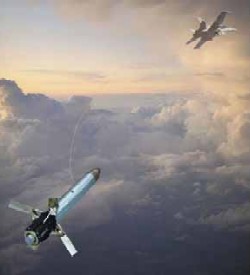
Under Phase 1 of the LRIP, the Information & Electronic Warfare Systems (IEWS) business unit of BAE SYSTEMS North America, will deliver six onboard systems, 30 fibre optic towed decoys (FOTDs), plus spares. Deliveries under Phase 1 will begin in 2003. An option for LRIP Phase 2 would provide an additional 14 onboard systems, 30 FOTDs, spares, and provisions for foreign military sales.
Total value of the contract, including options, could reach $145 million.
Steve Morais, BAE SYSTEMS' IDECM programme manager said the program's development met a number of major milestones in the past year to reach the point of production. "We successfully completed Operational Assessment, Development Test and Assist, and delivered the Block 5 software - all critical steps toward LRIP.
IDECM RFCM incorporates avionics, including the onboard receiver and processing system developed and manufactured by ITT Industries' Avionics Division, and the off-board countermeasures which include the high power FOTD and deployment canister developed by BAE SYSTEMS. The system will be deployed initially on Navy F/A-18E/F aircraft, followed by US Air Force B-1B and F-15 aircraft.
Russia Set To Launch Arms Sales Offensive In Africa.
Russia is to take a renewed interest in the defence equipment market in Africa and Asia. President Vladimir Putin is driving a new arms export strategy that will focus on selling arms and equipment to Nigeria, Angola and Libya.
The Johannesburg Business Day newspaper on Monday reported that by the end of 2000 90% of Russian arms exports went to just two countries, India and China. It reported that Putin planned to change this and also boost Russian exports by 15%. Defence industry sources, the paper reported, said last year was the best for arms exports since the collapse of the Soviet Union in 1991, with exports of arms and military equipment reaching US3,8-billion.
Putin is planning a state visit to several African countries later this year, including South Africa, Libya, Nigeria, Angola and Namibia. Putin is expected to stress defence co-operation during his tour.
Although the sales emphasis will lie further north, South Africa will be the base of operations, diplomatic sources told DSD. Russia views the country as the best location on the continent for rebuilding, upgrading and servicing East Bloc-built helicopters and fixed-wing aircraft for other African air forces.
Africa was a major Cold War recipient of Soviet, East European, Chinese and North Korean arms and equipment -- much of it now derelict. Although outdated by modern standards, the equipment, if upgraded or rehabilitated, can soldier on for many years to come. Indeed, the low GDP and purchasing power of most African defence budgets allow few militaries on the continent a choice. Several South African companies have developed relatively inexpensive upgrades for Soviet-type equipment. Israeli companies have also been active on the continent and are in the process of upgrading Zambia's MiG-21 bis Fishbed fighters.
The conflicts in the Democratic Republic of the Congo and in the Horn of Africa further saw a inflow of sophisticated weapons and aircraft -- much of it surplus stock from former Soviet republics and eastern Europe and often with crews and ground support equipment. As they leave further scope for proper management, upgrades and ongoing training will arise. Russian companies based in South Africa will be well placed to exploit these opportunities.
The Russian foreign ministry would also play a role in the process. A spokesman said its role would be to assess the "political feasibility" of contract proposals. "We analyse what effect arms sales may have, so as to avoid destabilisation and fuelling local conflicts. We also judge whether the recipient is fully in control of the deployment of weapons to avoid re-export," he said.
BAE Systems Awarded Contract For Longbow Hellfire Missile System.
BAE SYSTEMS has received a contract for more than $30 million from Lockheed Martin Millimeterwave Technologies Inc., (LMMTI) to manufacture millimeterwave transceivers for the Longbow Hellfire missile system. The missile will be deployed on U.S. Army AH-64D and United Kingdom Army WAH-64 Apache helicopters.

The contract extends the work done at BAE SYSTEMS Information & Electronic Warfare Systems (IEWS), Nashua, New Hampshire, since October 1999 to supply the missile transceivers. Under this latest full rate production contract, IEWS will build 6,329 transceivers for LMMTI to be delivered through 2004. The contract also has options that could extend the quantity to 10,979 units over the next five years.
The transceivers, which are installed in the sensor head of the missile, transmit and receive target tracking signals and relay information to the missile seeker.
According to Kimberly Cadorette, IEWS’ Longbow programme manager, “This contract extends a very successful IEWS program as a major supplier of millimeterwave missile electronics. We are pleased to be providing this critical component of the Longbow missile system.”
Click Here for Printer Version
© 1997 - 2000 COMBATSIM.COM, Inc. All Rights Reserved.
